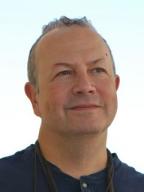CSUN Professor Educates Public About Edible Wild Mushroom Safety

California State University, Northridge biology professor and co-teacher for the Beginner Mushroom Identification Course for the Los Angeles Mycological Society.
The scenic woods in California’s national parks wouldn’t exist without a balanced ecosystem, which includes mushrooms — the reproductive form of some fungi typically produced above ground in soil or on its food source.
In an effort to help the public and members of the Los Angeles Mycological Society (LAMS) identify what they find when they go mushroom hunting, California State University, Northridge biology professor David Bermudes and mycologist Florence Nishida are co-teaching a monthly “Beginner Mushroom Identification” course, every third Monday at the Natural History Museum of Los Angeles County. LAMS is a non-profit group whose purpose is to foster and expand the understanding and appreciation of mycology — the study of mushrooms and fungi.
The class, which began in October and runs from 6 to 7 p.m. until May 2018, is located in the Times Mirror Room in the southwest portion of the museum building, at 900 W. Exposition Blvd. in Los Angeles.
“People may be interested in searching for and eating wild mushrooms because they are much better than the ones they would buy in the store,” said Bermudes. “If you want to eat wild mushrooms, though, you need to learn how to identify them. There are poisonous species, and you can die from eating the wrong one.”
The course’s structure is based on the wild mushrooms that students bring to class. Bermudes and Nishida offer lessons on how to identify the fungi by using the textbook, “Mushrooms of Western North America,” written by John A. Menge, R. Michael Davis and Robert Sommer.
The educators hope to help students become familiar with a mushroom’s morphological characteristics — the size, shape and structure of an organism or one of its parts, said Bermudes.
The course also discusses the mushroom’s biology and morphology — the relationship between a living organism and its structure.
“Fungi are heterotrophs, which means they’re non-photosynthetic,” said Bermudes. “They have to eat something else rather than utilizing sunlight, and there are different ways of doing that. Some fungi attach to the roots of trees, providing the benefits of nutrients and water to the trees.
“Trees are beneficial to the fungus because they use photosynthesis, meaning a tree has the ability to makes its own sugar,” continued Bermudes. “The tree actually transfers the sugar to the fungus. They live better together than they do without each other.”
The course is free for LAMS members, but a society membership is required to take the course. The annual membership fee is $25; students can receive a discounted annual membership for $15. Parking at the museum is also free with a membership. All ages are welcome to join.
For more information on the course, please email david.bermudes@csun.edu.
To sign up for membership with the society, please visit the LAMS membership website.

 experience
experience